The era of the four-blade broadhead is here. It’s been over a decade in the making but they have begun to really gain popularity, especially in recent years. Why? The answer is simple. More total cutting area, designs built for accuracy and most importantly, hard-hitting modern bows to drive them home. About 15 years ago when my archery career began I went straight to four blade heads. That’s about the time companies began emphasizing short profiled, four-blade heads like Muzzy and shortly thereafter, Slick Tricks. Now, there are multitudes of effective fixed, hybrid and recently, fully expandable heads available.
Over the past three years I’ve tested as many types and variances of four-blade broadheads as I could get my hands on. During that time I’ve shot roughly 50 animals ranging from javelina to giant wild brush bulls across the West and Hawaii. Results have varied from disappointing blood trails to jaw-droppingly awesome performance. On top of that, our arrow flight performance testing using Doppler radar by Labradar makes this review the most comprehensive and detailed broadhead review ever published to date.
The Labradar:
The Labradar is a first of its kind tool for measuring velocities of arrows during their entire flight path using Doppler radar technology. In our groundbreaking testing, we have been able to actually measure the drag of any given arrow/vane/head combination along its entire flight path. The results of our testing showed some dramatic results. We concluded that vane orientation (degrees of offset or helical) plays a larger role in drag than the broadheads do. And another big take away we found was all of the broadheads are equal in velocity loss when compared to each other meaning the drag amongst the fixed blades is equal.
As bowhunters, the important thing to note here is you need to find the ideal balance between stability and speed to maximize your rig’s potential.
After comparing field tips on both straight vane and three-degree helical fletched arrows as our control, the helical arrows were about five fps slower than straight vanes at 90 yards. Inside of 50 yards the helical vanes averaged three fps slower than straight.
Furthermore, the same arrows tipped with a big, fixed broadhead (Magnus Stinger) were around 11 fps slower at 90 yards with straight vanes as compared to the control and 12 fps slower with helical at the same distance compared to the control. See the chart on page XX for a graphic of our findings.
The Setup:
My bow setup is 29” draw with an arrow speed of just over 300 fps. I broadhead tuned with the largest surface area blade of the bunch – the Magnus Stinger. Broadhead tuning is very simple (see the video on our YouTube channel) and is the only way to achieve the best accuracy out of your setup. For best accuracy results, I’ve found full helical fletching for COC type broadheads performs best.
For this test, I have 12 different four-blade style broadheads in three different categories. Fixed Blade, hybrid and mechanical – all 100 grains. I am considering cut-on-contact heads with bleeder blades a four-blade broadhead (i.e. Magnus Stingers) mostly because my focus is on total cutting area. I also rate each broadhead based on construction, blade sharpness and spin-testing.
Vanes:
While I did use straight vanes in the Labradar testing, I never shoot them with a broadhead in a hunting situation. I always start off shooting every broadhead with a 1° offset vane configuration because a slower spinning arrow is affected less by drag when compared compared to full helical. If I’m not happy with the accuracy at 60+ yards, I’ll go to a full helical. Usually fixed broadheads have a decent amount of surface area and require a full helical vane configuration for maximum accuracy despite losing some velocity.
The Fatal Fours
 Wasp Sharpshooter – This is a cut on contact broadhead that is built for toughness and of course penetration. Wasp incorporated a hardened stainless steel forward section that aligns the main blade to the ferrule. This reinforced tip substantially increases durability of a broadhead that was built to split bone. Between the steel tip and once piece aluminum ferrule design, ferrule integrity was never compromised in my experience with the Sharpshooter. The blade retention collar is extremely strong keeping the blades in place during hard bone impact. The Sharpshooter is ideal for big boned, thick-skinned game where deep penetration is essential.
Wasp Sharpshooter – This is a cut on contact broadhead that is built for toughness and of course penetration. Wasp incorporated a hardened stainless steel forward section that aligns the main blade to the ferrule. This reinforced tip substantially increases durability of a broadhead that was built to split bone. Between the steel tip and once piece aluminum ferrule design, ferrule integrity was never compromised in my experience with the Sharpshooter. The blade retention collar is extremely strong keeping the blades in place during hard bone impact. The Sharpshooter is ideal for big boned, thick-skinned game where deep penetration is essential.
Pro – COC blade with steel reinforcement/exceptionally sharp.
Con – Partial aluminum ferrule.
Blade Sharpness – five stars
Construction – five stars
Spin Test Approved
.040 Blade thickness
Total Cut Area – 2”
MSRP: $34.99 / 3 ea.
 Wasp Boss 4 Blade – I consider the boss a little more forgiving in flight because of its shortened ferrule design. Theoretically, crosswinds will affect the Boss less than the Sharpshooter. The Boss has a stainless steel tip, which is essential for strength however the Boss’s stainless steel trocar tip is designed to split bone. I will say Wasp did very well building both the Boss and the Sharpshooter. I do believe a solid steel design is ideal but I was not able to find a weakness in these heads. The Boss 4 is ideal for bone splitting performance on deer and elk.
Wasp Boss 4 Blade – I consider the boss a little more forgiving in flight because of its shortened ferrule design. Theoretically, crosswinds will affect the Boss less than the Sharpshooter. The Boss has a stainless steel tip, which is essential for strength however the Boss’s stainless steel trocar tip is designed to split bone. I will say Wasp did very well building both the Boss and the Sharpshooter. I do believe a solid steel design is ideal but I was not able to find a weakness in these heads. The Boss 4 is ideal for bone splitting performance on deer and elk.
Pros – Stainless steel precision aligned tip/exceptionally sharp.
Con – Partial aluminum ferrule.
Blade Sharpness – five stars
Construction – five stars
Spin Test Approved
.027 blade thickness
Total Cut Area – 2”
MSRP: $37.99 / 3 ea.
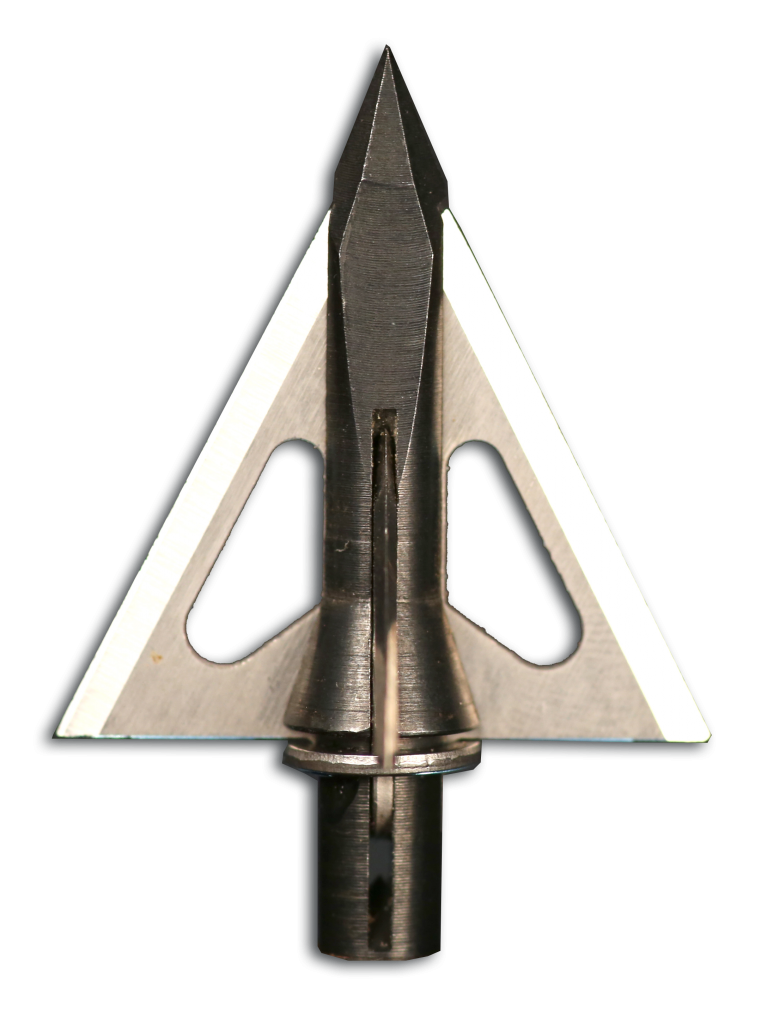 Vipertrick – My favorite component of the Vipertricks and Slicktricks are the one-piece machined Super Steel ferrule. By nature this design will always spin true and is one of the strongest on the market. For a cut-on-contact type head, the Vipertrick is truly hard to beat. The Viper Trick is ideal for heavy-boned animals that require deep penetration.
Vipertrick – My favorite component of the Vipertricks and Slicktricks are the one-piece machined Super Steel ferrule. By nature this design will always spin true and is one of the strongest on the market. For a cut-on-contact type head, the Vipertrick is truly hard to beat. The Viper Trick is ideal for heavy-boned animals that require deep penetration.
Pro – One-piece steel ferrule
Con – Small cutting diameter
Blade Sharpness – five stars
Construction – five stars
Spin Test Approved
.035 Blade Thickness
Total Cut Area- 1 15/16”
MSRP: $42.99 / 4 ea.
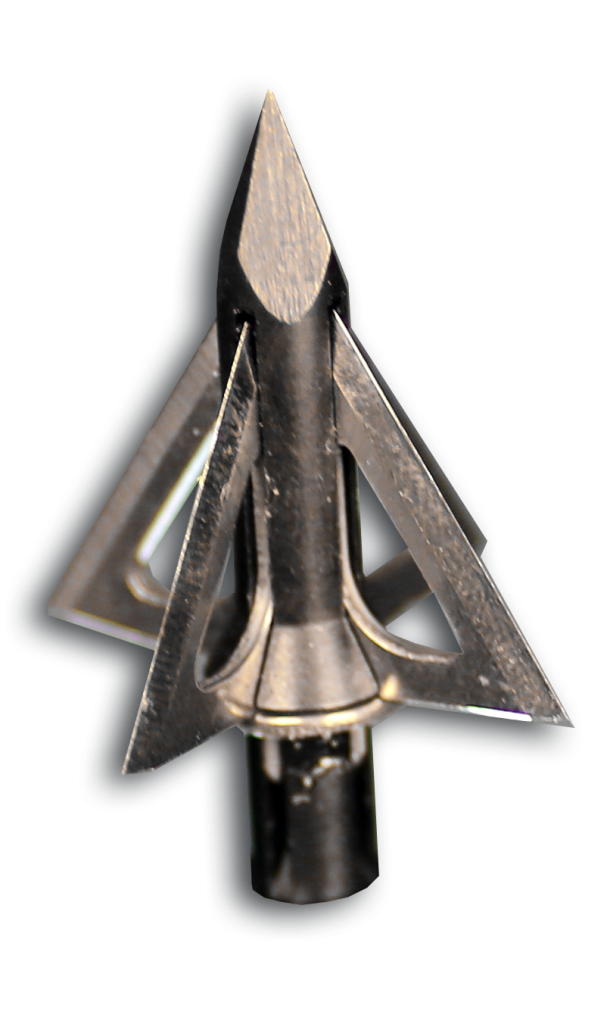 Slick Trick Standard – I’ve been shooting Slick Tricks for over 10 years and have never been disappointed. They always spin perfect and sport an exceptionally tough, all-steel Alcatraz blade locking system. The German stainless steel Lutz blades are renowned for their surgical sharpness. This head is a great choice for any game animals you can pursue with a bow.
Slick Trick Standard – I’ve been shooting Slick Tricks for over 10 years and have never been disappointed. They always spin perfect and sport an exceptionally tough, all-steel Alcatraz blade locking system. The German stainless steel Lutz blades are renowned for their surgical sharpness. This head is a great choice for any game animals you can pursue with a bow.
Pros – One piece steel ferrule.
Con – Some noise in flight.
Blade Sharpness – five stars
Construction – five stars
Spin Test Approved
.035 Blade Thickness
Total Cut Area – 2”
MSRP: $42.99 / 4 ea.
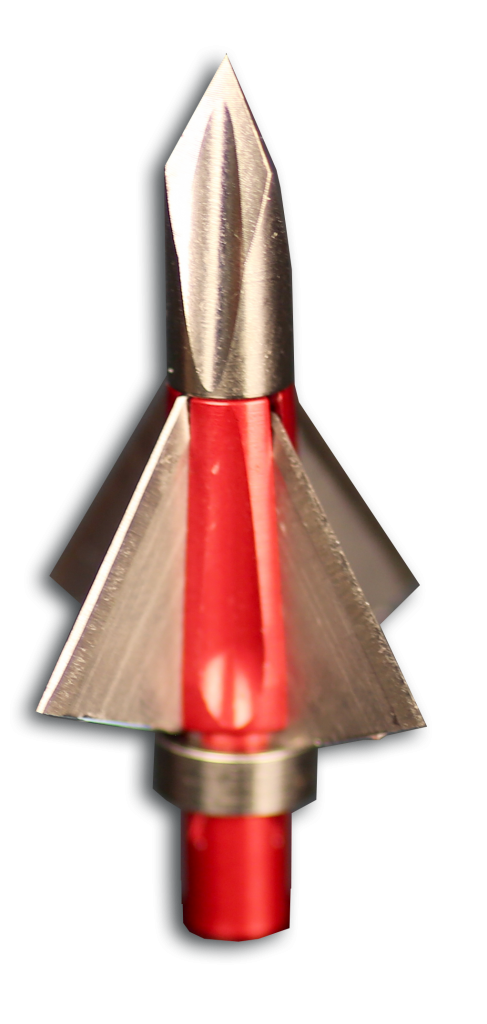 Savora Madman LPS100-4 – The Madman LPS100-4 is a two-piece ferrule design with a stainless steel trocar tip combined with a high-strength aluminum main body. The blades lock solidly with a stout retention collar. These heads are machined well, spin true every time and are accurate. Savora also has a titanium three broadhead that may be the toughest out there. Be sure to look for my review at a later date. Check out the large selection of Savora heads at radicalarchery.com. The Madman LPS100-4 is ideal for bone splitting performance on deer and elk-sized game.
Savora Madman LPS100-4 – The Madman LPS100-4 is a two-piece ferrule design with a stainless steel trocar tip combined with a high-strength aluminum main body. The blades lock solidly with a stout retention collar. These heads are machined well, spin true every time and are accurate. Savora also has a titanium three broadhead that may be the toughest out there. Be sure to look for my review at a later date. Check out the large selection of Savora heads at radicalarchery.com. The Madman LPS100-4 is ideal for bone splitting performance on deer and elk-sized game.
Pro – Short profile.
Con– I experience some wind drift possibly due to solid blade design (vented blade option available).
Blade Sharpness – five stars
Construction – four stars
Spin Test Approved
Blade Thickness .030
Total Cut Area – 2”
MSRP: $29.99 / 3 ea.
 Magnus Stinger Buzzcut – Some might say the Magnus Stingers are too long of a profile for good down range accuracy. I did not find that to be true with helical fletching. They shot well and grouped just as good as anything else. Once again it comes down to how well your bow is tuned. If your bow isn’t perfectly tuned, these probably won’t be perfectly accurate. The Stingers are made for penetration and handle bone well. Better yet, Magnus offers a Lifetime Warranty. This head is ideal for deep penetration on heavy boned animals.
Magnus Stinger Buzzcut – Some might say the Magnus Stingers are too long of a profile for good down range accuracy. I did not find that to be true with helical fletching. They shot well and grouped just as good as anything else. Once again it comes down to how well your bow is tuned. If your bow isn’t perfectly tuned, these probably won’t be perfectly accurate. The Stingers are made for penetration and handle bone well. Better yet, Magnus offers a Lifetime Warranty. This head is ideal for deep penetration on heavy boned animals.
Pro – Low blade angle designed for maximum penetration.
Con – Long blade profile, greater chance to be affected by cross wind at distance.
Blade Sharpness – five stars
Construction – five stars
Spin Test Approved
.040 Blade Thickness
Total Cut Area – 1 13/16”
MSRP: $39.99 / 3 ea.
 Trophy Taker A-Tac – The A-Tac by Trophy Taker is the king of bone-splitting penetration. These broadheads are machined out of a solid piece of stainless steel and always spin perfect. The tip, which was built for strength and bone splitting capabilities, houses the main blade that is the most thick and sharp of any of the broadheads I tested. The A-Tac is ideal for bone splitting performance on heavy boned animals where toughness and penetration is of maximum concern. These are expensive broadheads but they are the toughest of all the heads I tested.
Trophy Taker A-Tac – The A-Tac by Trophy Taker is the king of bone-splitting penetration. These broadheads are machined out of a solid piece of stainless steel and always spin perfect. The tip, which was built for strength and bone splitting capabilities, houses the main blade that is the most thick and sharp of any of the broadheads I tested. The A-Tac is ideal for bone splitting performance on heavy boned animals where toughness and penetration is of maximum concern. These are expensive broadheads but they are the toughest of all the heads I tested.
Pro – Thick, solid steel built to split bone and penetrate with a minimal profile.
Con – Smallest total cut diameter of broadheads tested, pricey.
Blade Sharpness – five stars
Construction – five stars
Spin Test Approved
.080 Main Blade Thickness
Total Cut Area – 1 6/8”
MSRP: $95 / 3 ea.
 Wac’em Exit – The design behind the four-blade Wac’em Exit may be the best. It’s a machined, extremely solid, razor sharp, COC broadhead. The one-piece steel ferrule sits behind a COC tip in which all four-blade edges seamlessly transition into the tip. The four-plane chisel type tip can be sharpened or honed on any flat stone. The Wac’em Exit is ideal for maximum penetration on deer, elk and larger game where a COC-style head is desired.
Wac’em Exit – The design behind the four-blade Wac’em Exit may be the best. It’s a machined, extremely solid, razor sharp, COC broadhead. The one-piece steel ferrule sits behind a COC tip in which all four-blade edges seamlessly transition into the tip. The four-plane chisel type tip can be sharpened or honed on any flat stone. The Wac’em Exit is ideal for maximum penetration on deer, elk and larger game where a COC-style head is desired.
Pro – All steel COC design, tip can be re-sharpened.
Con – Blades are on the thin side.
Blade Sharpness – five stars
Construction – four stars
Spin Test Approved
.027 blade thickness
Total Cut Area – 2 ⅛”
MSRP: $37.99 / 4 ea.
 Muzzy Trocar HBX – This is a new hybrid head from Muzzy based off their popular fixed-blade Trocar. The HBX is another great one-piece steel ferrule design featuring two expandable blades and two fixed blades. This head is designed to create large wound channels and produce blood trails a blind man could follow. The Muzzy Trocar HBX is ideal for deer-sized game where maximum cutting diameter and would channel creation is desired.
Muzzy Trocar HBX – This is a new hybrid head from Muzzy based off their popular fixed-blade Trocar. The HBX is another great one-piece steel ferrule design featuring two expandable blades and two fixed blades. This head is designed to create large wound channels and produce blood trails a blind man could follow. The Muzzy Trocar HBX is ideal for deer-sized game where maximum cutting diameter and would channel creation is desired.
Pro – One-piece solid steel ferrule.
Con – Thin expandable blades.
Blade Sharpness – five stars
Construction – four stars
Spin Test Approved
.035 blade thickness
Total Cut Area – 2 ⅝”
MSRP: $39.99 / 3 ea.
 Gravedigger – The Gravedigger harbors a machined aluminum ferrule with two fixed leading blades and two expandable blades. The key to the expandable blades notable performance is the sharp blade shoulder as compared to traditional mechanicals that have a rounded/dull shoulder. This feature maximizes penetration and minimizes kinetic energy loss upon blade deployment. I was skeptical with these heads at first but Gravediggers have done nothing but impress me since I started using them. Chisel tip or COC versions are available. I prefer the COC version for elk and have experienced the best accuracy being achieved with full helical vanes. I’ve tested this broadhead on over 25 animals in the past three years and Gravediggers have met or exceeded my expectations every time. This head is ideal for exceptional penetration and maximum would channels up to elk and moose-sized game.
Gravedigger – The Gravedigger harbors a machined aluminum ferrule with two fixed leading blades and two expandable blades. The key to the expandable blades notable performance is the sharp blade shoulder as compared to traditional mechanicals that have a rounded/dull shoulder. This feature maximizes penetration and minimizes kinetic energy loss upon blade deployment. I was skeptical with these heads at first but Gravediggers have done nothing but impress me since I started using them. Chisel tip or COC versions are available. I prefer the COC version for elk and have experienced the best accuracy being achieved with full helical vanes. I’ve tested this broadhead on over 25 animals in the past three years and Gravediggers have met or exceeded my expectations every time. This head is ideal for exceptional penetration and maximum would channels up to elk and moose-sized game.
Pro – COC or Chisel tip design with efficient combination of penetration and total cut diameter.
Con – Aluminum ferrule.
Blade Sharpness – five stars
Construction – four stars
Spin Test Approved
Blade thickness .040 Fixed Blade, .032 expanding blades
Total Cut Area – 2 ¾”
MSRP: $42.99 / 3 ea.
 Grim Reaper Carni-Four – I believe this is the first four blade, traditional deploying expandable broadhead on the market. Built with two longer blades and two shorter blades – the Carni-Four fully deploys when contact with the target initiates the spring mechanism on the two longer blades leaving the shorter blades to deploy effortlessly. These heads slice a big wound channel, create massive entrance holes and perform the best in soft tissue. The Grim Reaper Carni-Four is ideal for maximum wound channel creation on deer-sized game in windy conditions or when longer shots out West are going to be encountered.
Grim Reaper Carni-Four – I believe this is the first four blade, traditional deploying expandable broadhead on the market. Built with two longer blades and two shorter blades – the Carni-Four fully deploys when contact with the target initiates the spring mechanism on the two longer blades leaving the shorter blades to deploy effortlessly. These heads slice a big wound channel, create massive entrance holes and perform the best in soft tissue. The Grim Reaper Carni-Four is ideal for maximum wound channel creation on deer-sized game in windy conditions or when longer shots out West are going to be encountered.
Pro – Massive total cut diameter, most accurate in the wind.
Con – Long aluminum ferrule, hard bone impact could be an issue.
Blade Sharpness – five stars
Construction – four stars
Spin Test Approved
Blade thickness .035
Total Cut Area – 2 ¾”
MSRP: $44.99 / 4 ea.
Load Your Quiver
We hope this article helps when it comes to finding the right broadhead for you from the mind-boggling array of quality options available. Be sure to look to future EBJ issues for more testing with the Labradar, we have some exceptional articles coming!
 Eastmans' Official Blog | Mule Deer, Antelope, Elk Hunting and Bowhunting Magazine | Eastmans' Hunting Journals
Eastmans' Official Blog | Mule Deer, Antelope, Elk Hunting and Bowhunting Magazine | Eastmans' Hunting Journals
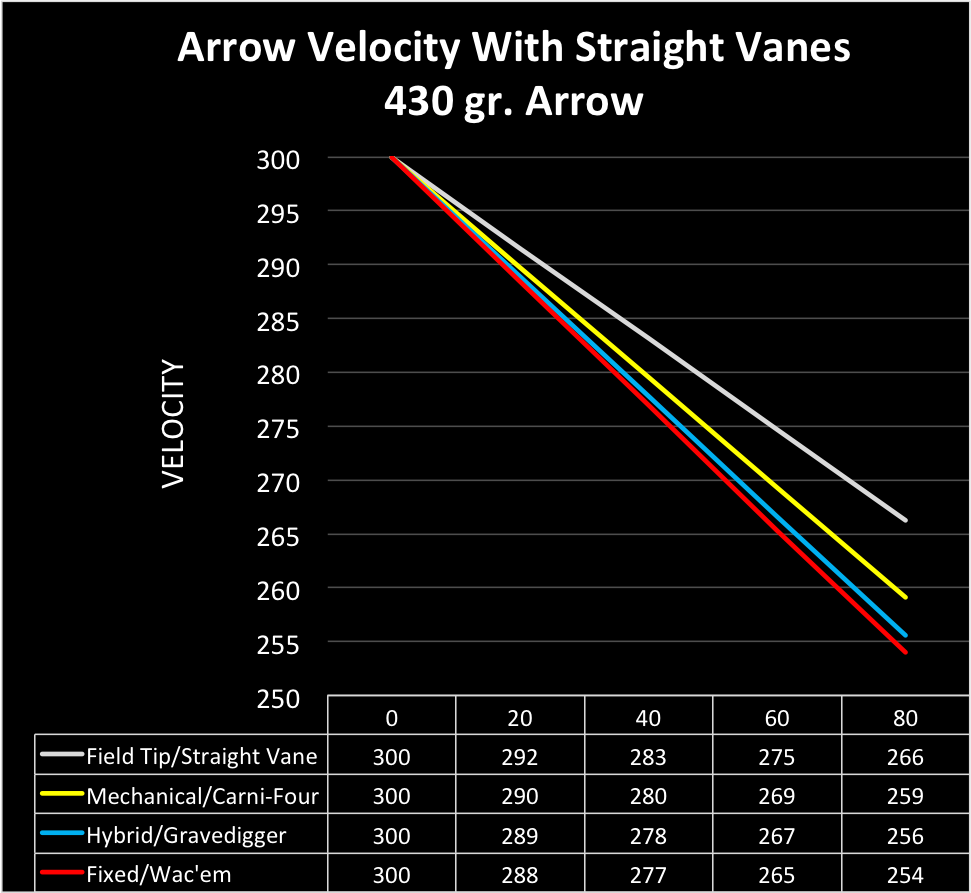
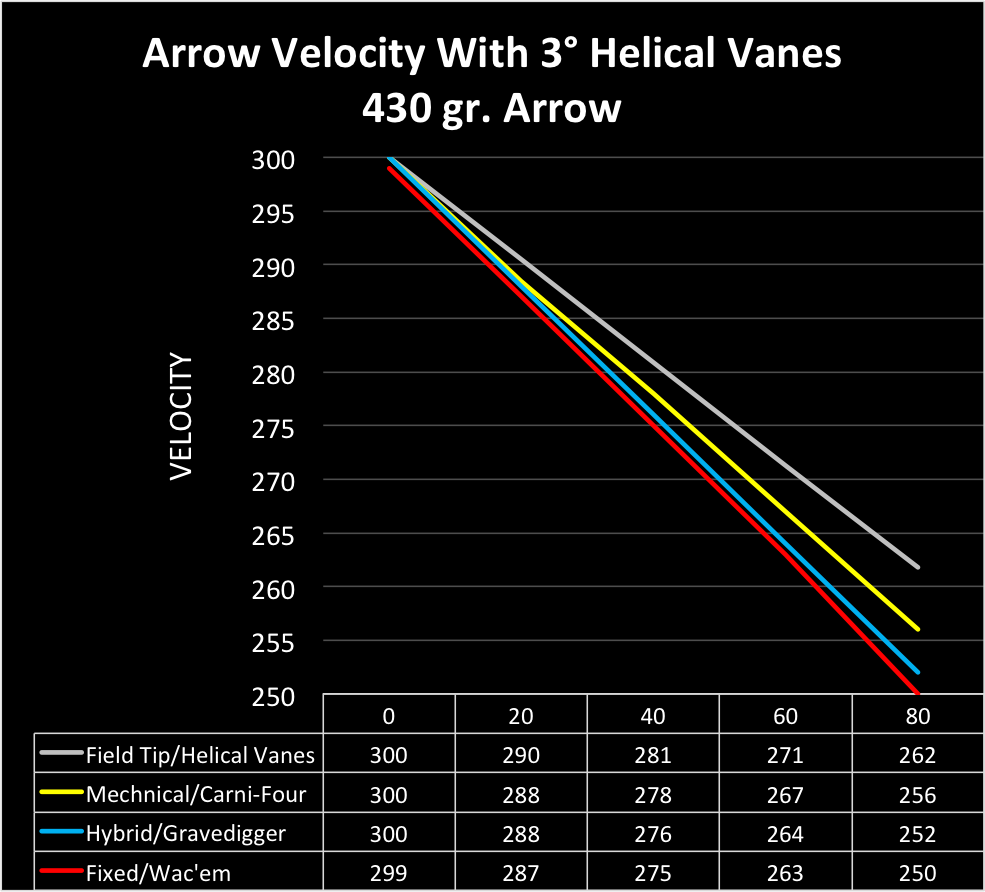




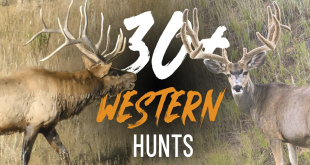
Do you use the COC or the Chisel point Gravedigger? Was one more accurate or better arrow fight then the other? I am looking at both and cannot make up my mind, I hunt mostly whitetail in PA but probably will be elk hunting this year too. I know they are both great heads, I just would like to know what you would buy? Thank you for the great review and data.